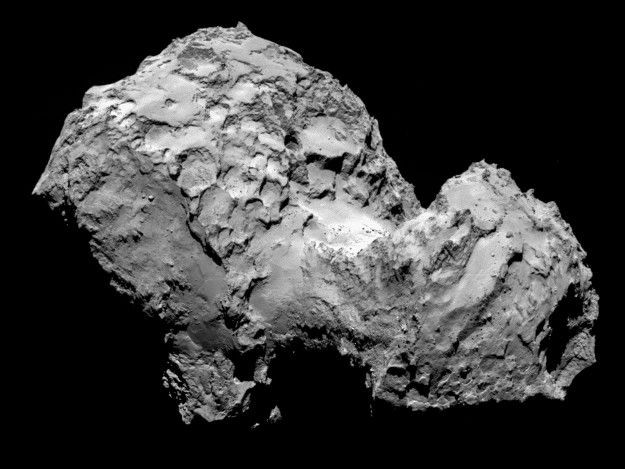Philae Probe Powered Down Indefinitely After Landing Issues, Comet Darkness

After a historic mission that included the first landing on a speeding comet, the Philae space probe has been put to sleep earlier than planned. Low battery power and a lack of visibility forced European Space Agency (ESA) handlers to power down the spacecraft, though only after it managed to beam a trove of new scientific data back to Earth.
ESA scientists announced in a weekend blog post that, for now, the mission appears to have ended early because the batteries ran down sooner than anticipated. Philae was supposed to transmit data from Comet 67/P for as long as nine months, finding a charge on its solar-powered battery as the comet passed by the sun. That plan became less likely when the probe’s landing didn’t go as anticipated last week, with the Philae separating from the Rosetta orbiter and twice bouncing away from its target landing spot.
Researchers expected the Philae to have seven hours of light per day, but a landing harpoon failed to fire correctly and caused the probe to fall to an area that receives only 1.5 hours a day.
“Philae has fallen into ‘idle mode’ for a potentially long silence. In this mode, all instruments and most systems on board are shut down,” the ESA wrote. “The lander remains unanchored to the surface at an as-yet-undetermined location.”
Ferried through billions of miles of space, the Philae traveled for 10 years before landing on the comet. While the landing issues limited the mission, ESA scientists are still optimistic that the Philae made the most of its time in deep space.
“Prior to falling silent, the lander was able to transmit all science data gathered during the First Science Sequence,” Stephan Ulamec, Philae’s lander manager, said in the ESA announcement. “This machine performed magnificently under tough conditions, and we can be fully proud of the incredible scientific success Philae has delivered.”
© Copyright IBTimes 2024. All rights reserved.





















